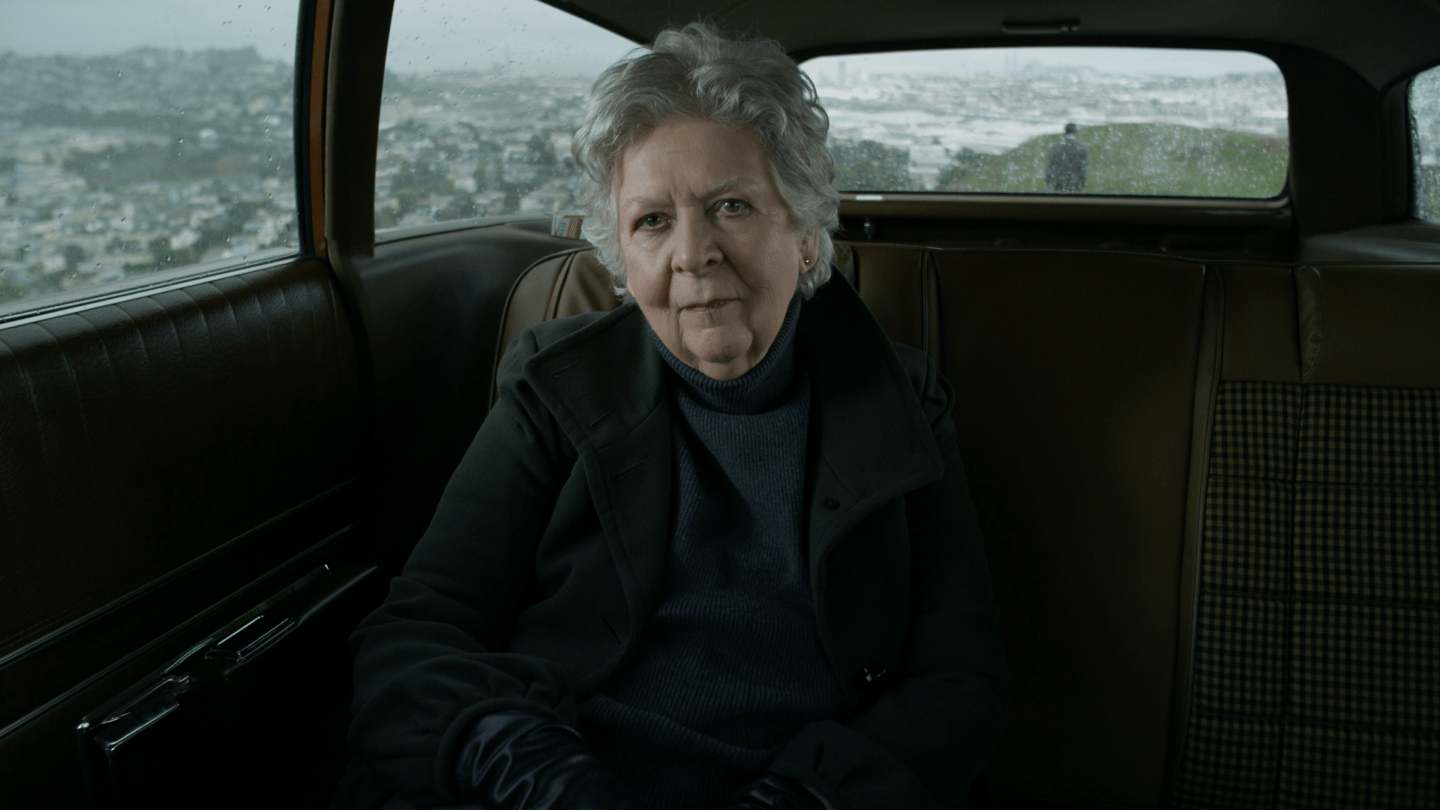Seventeen days after Charles Manson cultist Lynette “Squeaky” Fromme tried to kill President Gerald Ford, Sara Jane Moore, a run-of-the-mill suburban mother, attempted to do the same. After waiting outside the downtown San Francisco hotel where Ford was staying, she fired her pistol from among a crowd of eager onlookers. Like Fromme before her, Moore did not succeed, and her story was absorbed into the annals of history — destined, it seems, to become one of those facts that sounds too strange to be true.
Now, nearly 50 years later, the filmmaker Robinson Devor (Police Beat, Zoo, Pow Wow) has returned to Moore’s story. His fascinating new documentary, Suburban Fury, which premiered at New York Film Festival, tries to construct a consistent portrait of an eely figure. Using archival footage and exclusive interviews with Moore, who was freed in 2007 after serving more than three decades in prison, Devor explores how this seemingly ordinary woman became first an FBI informant and then a would-be assassin.
Suburban Fury
The Bottom Line
An absorbing study of a slippery figure.
Venue: New York Film Festival (Main Slate)
Director: Robinson Devor
1 hour 58 minutes
A title card note tells audiences that Moore requested no one else be interviewed for the project, and there are no talking heads to contextualize her tales, or discussions with anyone else in her life. The movie functions mostly as personal testimony — a riveting, if too often searching, autobiography of a figure whose political transformation is haunted by narrative inconsistencies.
This isn’t the first project to gesture at Moore’s unreliability as a storyteller. In 2008, the journalist Geri Spieler published Taking Aim at the President: The Remarkable Story of the Woman Who Shot at Gerald Ford, based on 30 years of their conversations. In her prologue, Spieler describes Moore’s shifty behavior once the book project was underway: “As I began to sketch out a schedule and create lists of people, Sara Jane started canceling our visits,” Spieler writes. “She did not like that I was doing research about the book without her direct and detailed involvement.” Moore, who was still incarcerated at the time, became tense, agitated and flaky. Their talks, formerly amiable and warm, frosted over. Eventually, Moore stopped speaking to Spieler, who continued writing the book without her.
Moore’s caginess around the truth is immediately apparent in her conversations with Devor in Surburban Fury. The interviews shift quickly between matter-of-fact (and sometimes even dulcet) recollections, and abrasive insistences on details and their order. Working with his previous collaborator and cinematographer Sean Kirby, Devor shoots them in locations that echo Moore’s life in the days before and after the incident, like a station wagon (which is where she would meet her FBI handler) or the hotel ballroom where she was interrogated after the attempted assassination.
Devor’s use of long shots, in which Moore sits in the car on a street familiar to her, recalls Francis Ford Coppola’s The Conversation (which served as inspiration here). In these haunting scenes, we, as viewers, seem especially positioned as intruders, surveilling Moore like she was once tasked to do.
Before Moore tried to kill President Ford, she was an FBI informant, assigned by an agent who called himself Bert Worthington to infiltrate political organizing groups on the left and report their activities to the government. She had been inspired to become more generally politically active after Patty Hearst was kidnapped by the Symbionese Liberation Army. The multiracial revolutionary group had asked for a ransom in the form of a food-distribution program, and Randolph Hearst had started the People In Need program in response. Moore volunteered to keep the books for that organization, and it was while working there that she was recruited by the the intelligence agency.
Devor organizes his documentary as a series of vignettes mostly soundtracked by Moore’s recollections. Numbers are used to denote each section, first in ascending order and then in descending order like a countdown clock. The explosive finale, we know, is when Moore aims her pistol at Ford. Ordering the material this way gives the film the nervy edge of a thriller and makes Moore’s account feel like a slippery assemblage of facts.
If it feels hard to keep up, that seems to be part of the point. While Moore knows how to tell a gripping tale, animating anecdotes with vivid imagery, the threads don’t always cohere. She shies away from biography, so although Suburban Fury covers parts of her early life — her desire to become an actor, her evidently fraught relationship to motherhood — it doesn’t satiate the hunger for more detail.
Moore’s story becomes most unstable when she explains her transition from FBI informant to radical. As she attended rallies, protests and meetings with SLA members and other left-leaning movement organizations, Moore became more aware of the systemic issues in the United States and aligned herself with the values of these groups. And yet, by her own words, she kept relaying their activities to the FBI. Every day, Moore sat down at her typewriter and wrote a report to her handler.
When pressed about that inconsistency, Moore becomes tense and almost hostile. Her energy echoes that of Bill O’Neil in the archival footage shown at the end of Shaka King’s Fred Hampton biopic Judas and the Black Messiah. In that brief clip, O’Neil talks about how despite helping the government sabotage the Black Panther Party, he still believed in the movement, and how unlike armchair activists, he had tried to make a change. Similarly, at the hearing where she was sentenced to life in prison, Moore waves off contradictions. “Am I sorry I tried?” she says of the attempted assassination. “Yes and no. Yes, because it accomplished little except throw away the rest of my life. And, no, I’m not sorry I tried, because at the time it seemed like a correct expression of my anger.”
And wasn’t there a lot to be angry about? Viewers are left to draw their own conclusions about Moore’s rage, but Devor and his archival researcher Bob Fink (who also serves as co-writer with Charles Mudede) offer much in the way of contextual historical footage. Television program excerpts, newspaper clippings and other ephemera from the early to mid-’70s reveal a country weathering concurrent calamities and social inequities, with Watergate, Vietnam, racial inequality and violence against the poor all generating high levels of public mistrust in the government. Ford’s plan was to restore that faith and assume the mission of presidents past and present to reunite a chronically fractured nation.
Moore, who became increasingly disillusioned by the system during this time, gestures at a desire to show people that America wasn’t living up to its professed ideals. At its most interesting, Suburban Fury probes this tension alongside Moore’s account. It’s in this space that Devor’s film, bursting with energy of the archives and the thrill of a narrator who can’t quite be trusted, finds its purpose.








